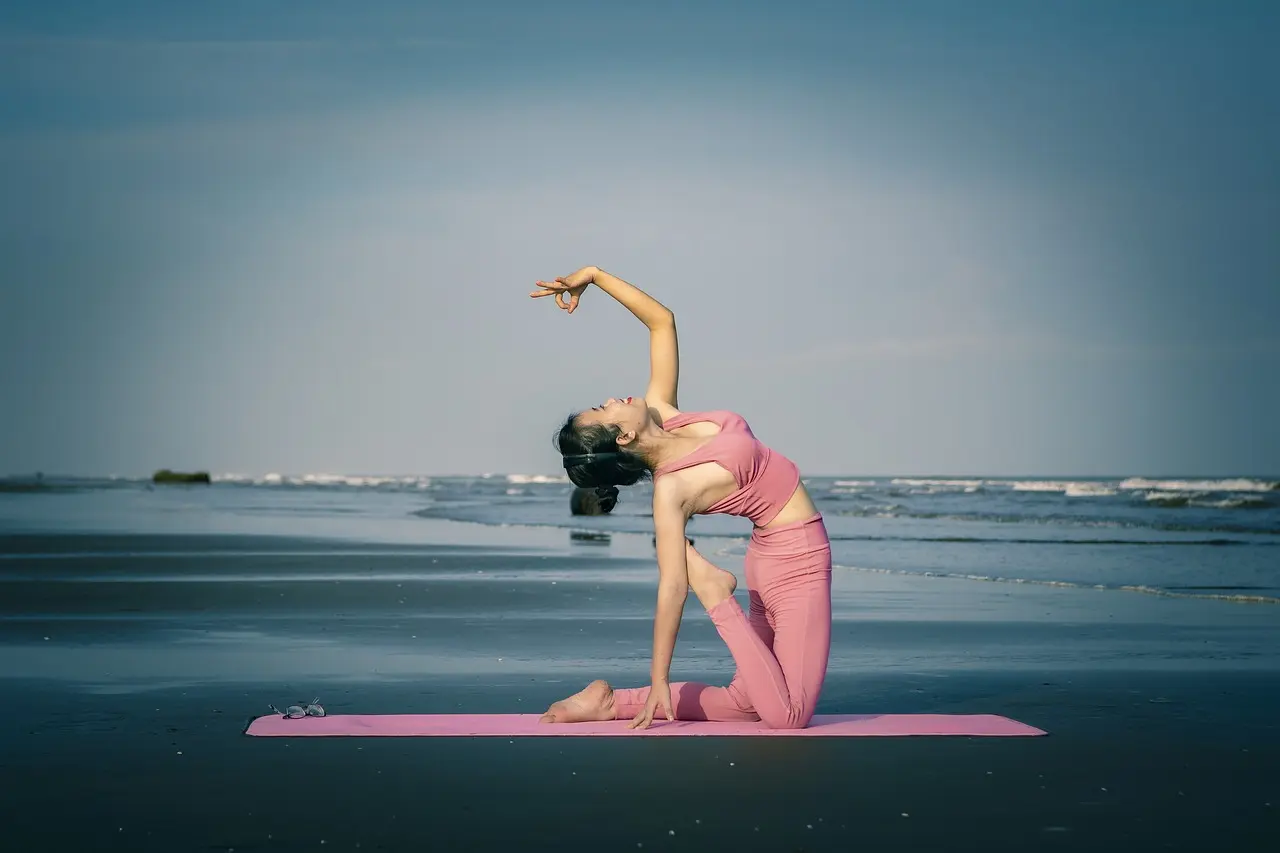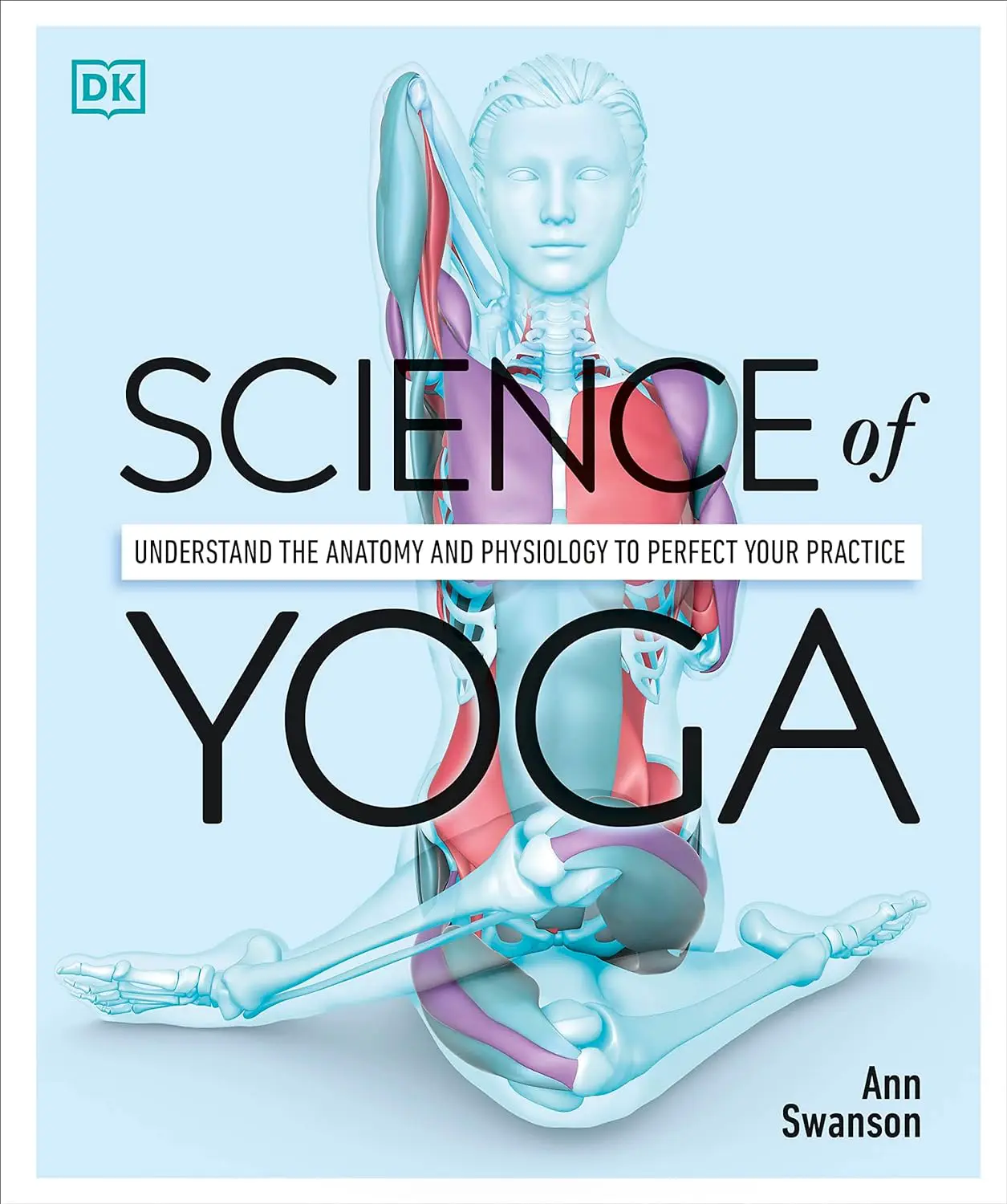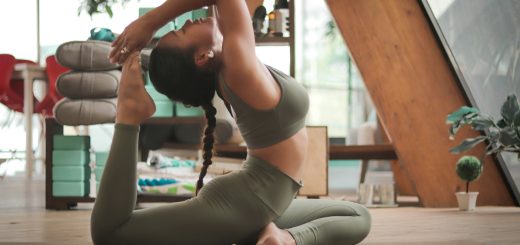Yoga for EveryBody: Adapting Poses for Your Unique Practice

Looking for more amazing products? Check out our online store and explore our collection here! Happy shopping!
Before diving in, please note: This post is for informational purposes only. If you’d like to know more about how we approach topics, feel free to check out our friendly Disclaimer Page.
Hey there, amazing readers! 
We’re committed to delivering quality posts, and your support (even just sticking around despite the ads) means everything to us. So, bear with us, and thanks for helping us keep the good vibes rolling. Now, on to the fun stuff!
TRANSLATE BUTTON AT THE END OF THE ARTICLE
Overview
Yoga is a practice that can be enjoyed by people of all ages, fitness levels, and body types.
However, not all yoga poses are suitable for everyone, and it is important to adapt the practice to meet your individual needs.
Adapting poses allows you to experience the benefits of yoga while respecting your body’s abilities and limitations.
In this article, we will explore the importance of adaptation in yoga and provide helpful tips on modifying poses for different conditions, ages, fitness levels, and health conditions.
We will also discuss the benefits of chair yoga for those with limited mobility and the importance of tailoring your practice to meet your personal goals and needs.
Understanding the Importance of Adaptation in Yoga
Adaptation is a crucial aspect of yoga as it allows individuals to practice safely and effectively.
Each person’s body is unique, with its own strengths, weaknesses, and limitations.
By adapting poses, you can ensure that you are not pushing yourself beyond your limits and risking injury.
Adaptation also allows you to focus on correct alignment and engage the targeted muscles more effectively.
It is important to remember that yoga is not about achieving a specific shape; rather, it is about finding balance, strength, and flexibility in your body and mind.
Assessing Your Body’s Abilities and Limitations
Before starting a yoga practice, it is important to assess your body’s abilities and limitations.
Take the time to observe how your body feels and moves in different poses.
Notice any areas of tightness, discomfort, or pain.
Understanding your body’s limitations will help you make informed decisions when it comes to modifying poses.
If you have any pre-existing injuries or conditions, it is advisable to consult with a qualified yoga teacher or healthcare professional for guidance.
They can provide personalized recommendations and modifications based on your specific needs.
Modifying Poses for Joint Issues and Flexibility Concerns
For individuals with joint issues or limited flexibility, modifications can make yoga poses more accessible and comfortable.
Here are some tips for modifying poses:
Use props, such as blocks or straps, to support your body and enhance stability.
Focus on the range of motion that feels comfortable for your joints, avoiding any pain or discomfort.
Gradually increase the depth of the pose over time, as your flexibility improves.
Choose alternative variations of poses that put less stress on the joints, such as kneeling instead of standing.
Remember, it is important to listen to your body and never force yourself into a pose that feels painful or uncomfortable.
Yoga should be a gentle and nurturing practice.
Adapting Yoga for Different Ages and Fitness Levels
Yoga is suitable for people of all ages and fitness levels.
Whether you are a beginner or have been practicing for years, there are ways to adapt the poses to meet your needs.
Here are some suggestions:
Start with gentle poses and gradually increase the intensity as your strength and flexibility improve.
Take breaks and modify poses as needed.
It’s okay to rest or choose a gentler variation if you feel fatigued or overwhelmed.
Seek out classes specifically designed for beginners or individuals with specific needs, such as senior yoga or prenatal yoga.
Work at your own pace and listen to your body.
Remember that yoga is not a competition, and it’s more important to honor your body’s limits than to push yourself beyond them.
By adapting the practice to your age and fitness level, you can create a safe and enjoyable yoga experience.
Supporting Your Practice with Props and Modifications
Props are valuable tools that can support your yoga practice and make poses more accessible.
They help improve alignment, stability, and provide extra support when needed.
Here are some common yoga props and how they can be used:
Yoga blocks: These can be used to bring the floor closer to you, providing support and stability in standing poses or poses that require reaching the ground.
Straps: Straps are useful for achieving proper alignment and extending your reach in poses that require flexibility, such as forward folds or shoulder stretches.
Bolsters: Bolsters offer extra support and comfort during restorative poses or for individuals with limited flexibility.
They can be used to prop up various body parts, such as the back, hips, or legs.
Blankets: Blankets provide cushioning and support for sensitive joints and can be used to modify poses by creating a softer surface or extra padding.
Using props and modifications allows you to enhance your practice and adapt poses to your unique needs.
Yoga Modifications for Common Health Conditions
Yoga can be a beneficial practice for individuals with various health conditions.
However, it is important to modify poses to accommodate specific needs and avoid exacerbating any existing conditions.
Here are some common health conditions and corresponding modifications:
Back pain: Avoid deep backbends and forward folds.
Focus on gentle stretches and strengthening exercises to support the back muscles.
High blood pressure: Avoid inversions and poses that place strain on the head or neck.
Instead, focus on calming and relaxing poses.
Arthritis: Modify poses to reduce joint stress, such as using props for support and practicing gentle movements.
Asthma: Avoid rapid breathing exercises and focus on gentle, slower-paced poses that promote relaxation and deep breathing.
Always consult with a healthcare professional or experienced yoga teacher for personalized modifications and guidance based on your specific health condition.
Adapting Poses for Pregnancy and Postpartum Yoga
Pregnancy and postpartum are unique periods in a woman’s life that require special considerations in yoga practice.
Here are some modifications for pregnant and postpartum individuals:
Avoid lying flat on your back after the first trimester of pregnancy.
Use props, such as bolsters or blankets, to elevate the upper body.
Modify twists and deep forward folds to accommodate the growing belly.
Focus on gentle stretches, strengthening exercises, and pelvic floor exercises to support the changing body during pregnancy and promote postpartum recovery.
Listen to your body and rest when needed.
Pregnancy and postpartum yoga should be gentle and nurturing, focusing on the well-being of both mother and baby.
Always consult with a qualified prenatal or postnatal yoga instructor for personalized modifications and guidance.
The Benefits of Chair Yoga for Limited Mobility
Chair yoga is a modified form of yoga that is performed while seated or using a chair for support.
It is an excellent option for individuals with limited mobility, injuries, or those who find it challenging to practice traditional yoga poses.
Here are some benefits of chair yoga:
Improved strength, flexibility, and balance: Chair yoga poses help strengthen and stretch muscles, promote joint mobility, and improve overall balance.
Reduced joint and muscle strain: The support of a chair allows individuals with limited mobility or injuries to perform poses without placing excessive stress on the joints or muscles.
Increased body awareness: Chair yoga provides an opportunity to focus on breath control, body alignment, and mindfulness, promoting a deeper mind-body connection.
Accessibility: Chair yoga can be practiced by people of all ages and fitness levels, making it an inclusive and accessible form of exercise.
Tailoring Your Practice for Individual Goals and Needs
Yoga is a highly customizable practice that can be tailored to meet your individual goals and needs.
Whether you are seeking stress relief, improved flexibility, strength building, or mindfulness, you can adapt your practice accordingly.
Here are some tips for tailoring your yoga practice:
Set clear intentions for your practice.
Identify what you hope to achieve and focus on poses, breathing exercises, and meditation techniques that support your goals.
Choose classes or styles of yoga that align with your preferences and objectives.
There are numerous options available, such as Hatha, Vinyasa, Restorative, or Yin yoga.
Experiment with different sequences and poses to find what resonates with you.
Explore variations, modifications, and props that enhance your practice.
Embrace the flexibility of yoga and allow your practice to evolve as your needs change.
Be open to trying new styles, poses, and techniques that challenge and inspire you.
Remember, yoga is a personal journey, and there is no right or wrong way to practice.
Focus on what feels good and supportive for your body and mind.
Finding the Right Balance Between Challenge and Comfort
When practicing yoga, it is important to find the right balance between challenge and comfort.
Pushing yourself beyond your limits can lead to injury, while staying within your comfort zone may limit your growth and progress.
Here are some tips for finding balance:
Listen to your body and honor its signals.
Avoid pushing through pain or discomfort, but also be open to exploring new boundaries and possibilities.
Find a qualified yoga teacher who can guide you and provide appropriate modifications and adjustments.
Gradually increase the intensity of your practice over time, allowing your body to adapt and grow stronger.
Embrace the concept of “ahimsa” or non-harming in your practice.
Choose modifications that respect your body’s limitations and allow for a safe and sustainable practice.
By finding the right balance between challenge and comfort, you can create a rewarding and fulfilling yoga practice.
Embracing the Diversity of Yoga for EveryBody
Yoga is a practice that celebrates diversity and inclusivity.
It is important to remember that there is no one-size-fits-all approach to yoga.
Each individual’s body is unique, and their practice should reflect that uniqueness.
By adapting poses, modifying sequences, and using props, everyone can find a way to experience the benefits of yoga.
Embrace the diversity of yoga and celebrate the fact that it can be practiced by people of all ages, fitness levels, and body types.
Remember, the true essence of yoga lies in the connection between body, mind, and spirit, and that connection can be nurtured in countless ways.
Conclusion
Adapting yoga poses to meet your unique needs is essential for a safe and fulfilling practice.
Understanding your body’s abilities and limitations, modifying poses for different conditions, ages, and fitness levels, and utilizing props and modifications are key aspects of adapting your practice.
Whether you choose chair yoga for limited mobility, modifications for health conditions, or tailoring your practice to individual goals, yoga can be enjoyed by everybody.
By finding the right balance between challenge and comfort and embracing the diversity of yoga, you can create a practice that nourishes your body, mind, and spirit.
Remember to always listen to your body, practice with awareness, and seek guidance from qualified instructors or healthcare professionals when needed.

The Enlightenment Journey is a remarkable collection of writings authored by a distinguished group of experts in the fields of spirituality, new age, and esoteric knowledge.
This anthology features a diverse assembly of well-experienced authors who bring their profound insights and credible perspectives to the forefront.
Each contributor possesses a wealth of knowledge and wisdom, making them authorities in their respective domains.
Together, they offer readers a transformative journey into the realms of spiritual growth, self-discovery, and esoteric enlightenment.
The Enlightenment Journey is a testament to the collective expertise of these luminaries, providing readers with a rich tapestry of ideas and information to illuminate their spiritual path.
Our Diverse Expertise
While our primary focus is on spirituality and esotericism, we are equally passionate about exploring a wide range of other topics and niches 

To ensure we provide the most accurate and valuable insights, we collaborate with trusted experts in their respective domains 
Our blog originally focused on spirituality and metaphysics, but we’ve since expanded to cover a wide range of niches. Don’t worry—we continue to publish a lot of articles on spirituality! Frequently visit our blog to explore our diverse content and stay tuned for more insightful reads.
Hey there, amazing reader! 
Check out our store here and take a peek at some of our featured products below! Thanks for being awesome!











